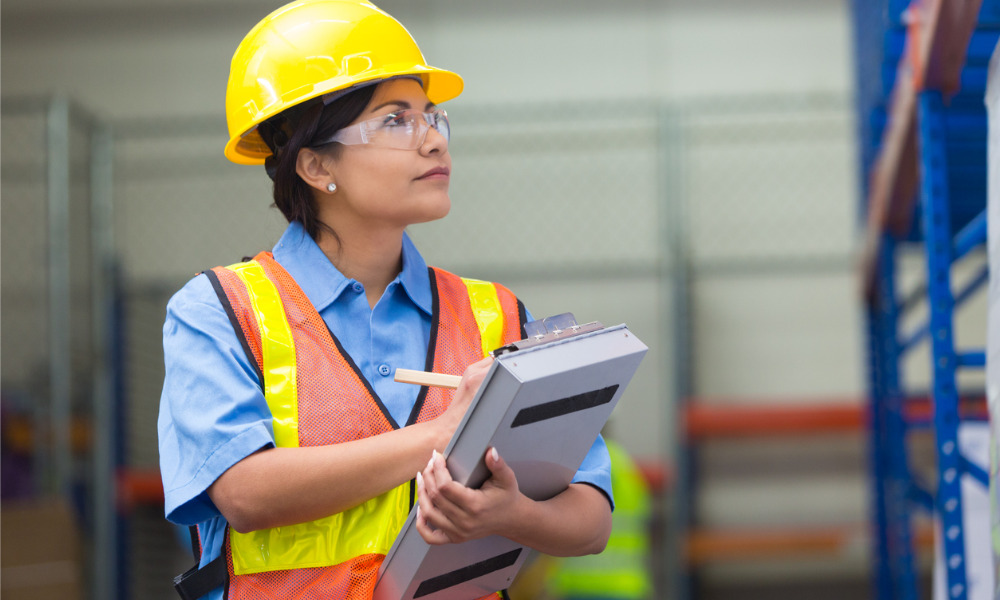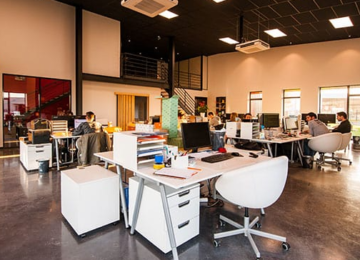The Rise of Mass Gatherings: Festivals, Sports, and Mega Events
Massive public events like concerts, sports games, and outdoor festivals attract thousands of people. These gatherings create vibrant experiences but also carry serious fire safety challenges. From temporary structures to densely packed crowds, risks quickly multiply. Fire departments must work closely with organizers to ensure everyone stays safe. Planning ahead reduces the likelihood of emergencies and saves lives.
Why Fire Safety in These Settings Is Exceptionally Complex
Large-scale events combine unpredictable elements such as weather, human behavior, and changing layouts. Organizers often build temporary stages, food courts, and rest areas in unconventional spaces. These conditions demand flexible and robust fire prevention strategies. Fire services must adapt quickly while ensuring safety remains the top priority. When fire safety is compromised, consequences can be catastrophic.
Purpose and Scope of This Article
This article explores how firefighting agencies and event organizers manage fire risks at major gatherings. You’ll learn about key strategies, prevention techniques, and regulatory frameworks. It also includes training practices and future developments in this field. Whether you’re an organizer or responder, this guide will help enhance safety planning.
Understanding the Risk Landscape
Crowd-Driven Hazards
Large crowds increase the chance of accidents and rapid fire spread. When people panic, exits can become congested and hard to reach. Without proper crowd flow management, evacuations may stall or fail. Fire departments must understand crowd psychology to plan effectively. Clear communication and controlled access points help prevent chaos. According to FEMA’s Special Events Planning Guide, crowd density significantly increases risk in fire-related emergencies.
Structural and Environmental Risks
Temporary stages and tents often lack built-in fire suppression systems. These setups may also block access routes or hide hazards from view. Outdoor conditions like wind can fuel flames and complicate rescue operations. Meanwhile, indoor venues face ventilation and smoke buildup concerns. Fire safety planning must adapt to each unique environment.
Fuel Load and Ignition Sources
Open flames from food stalls and stage effects pose serious ignition risks. Cigarettes, lighters, and alcohol increase the likelihood of accidental fires. Electrical wiring for lighting and audio equipment can also overheat. Fire officials need to identify and regulate these potential fuel sources. Early detection prevents small issues from becoming disasters.
Pre-Event Planning and Risk Assessment
Fire Department’s Role in Event Authorization
Fire departments help determine whether a venue meets safety standards. They evaluate proposed layouts, check for fire code compliance, and issue necessary permits. Coordination with public safety agencies ensures full coverage of potential risks. By getting involved early, fire teams can influence safer event designs. This collaboration benefits everyone attending. The U.S. Fire Administration confirms that fire officials must assess layouts and fire protection systems during event planning.
Comprehensive Fire Risk Assessments
Before an event begins, professionals inspect structures, exits, and ignition sources. They assess how fuel loads and crowd behavior might impact emergency response. Each element, from cooking stations to exit width, plays a role in safety planning. Detailed assessments highlight vulnerabilities and suggest actionable fixes. These assessments become the foundation of the fire response plan. Professionals with Fire Inspector certification online bring valuable expertise to this process.
The Pre-Incident Plan (PIP)
A strong PIP outlines what should happen if a fire breaks out. It includes escape routes, firefighter access points, and roles for key personnel. This plan also coordinates with the larger event safety plan to avoid conflicts. Having a PIP improves response times and saves lives. All involved teams must review it before the event begins.
Fire Code Compliance and Regulatory Frameworks
Key National and Local Fire Codes
Fire safety rules vary by location but often reference national standards like those from NFPA. Local authorities may add stricter requirements based on venue history or design. Staying informed on both levels helps organizers avoid violations. Fire departments ensure compliance through documentation and inspections. These rules form the legal foundation of fire safety.
Enforcing Fire Limits and Safe Occupancy
Each venue has a maximum safe occupancy, determined by exit capacity and layout. Exceeding this number puts everyone at risk during an emergency. Fire marshals monitor attendance and can shut down events if limits are ignored. Occupancy limits protect lives by preventing overcrowding. Venues must post these numbers clearly at entry points.
Inspection Checkpoints and Compliance Failures
Fire inspectors conduct walkthroughs before and during events to check for issues. Common failures include blocked exits, missing fire extinguishers, and overloaded circuits. Immediate corrections are often required to continue the event. These inspections encourage accountability and enforce safety standards. Neglecting fire code can lead to fines or shutdowns.
Egress Design and Evacuation Planning
Exit Infrastructure and Redundancy
Every large venue needs multiple exits spaced far enough apart to prevent crowding. Emergency lighting ensures exits remain visible even during power failures. Backup systems and wide paths support efficient evacuations. Organizers should never rely on just one or two exits. Redundant designs improve survival chances in fast-moving fires.
Flow Modeling and Crowd Simulation Tools
Modern software tools help simulate how people will move in an emergency. These models reveal bottlenecks, weak points, and slow zones. With this data, planners can redesign exits or rearrange stages. The goal is to reduce evacuation time and increase flow efficiency. NIST research supports using egress simulation tools to enhance crowd safety.
Real-Time Evacuation Management
During an emergency, announcements and signage guide people to safety. Trained staff play a key role in keeping the crowd calm and moving. Fire teams must coordinate closely with security to manage the flow. Quick decisions can prevent injury or panic. Communication tools ensure everyone receives the same clear instructions.
On-Site Fire Prevention and Mitigation
Fire Watch Teams and Mobile Patrols
Dedicated fire watch personnel monitor high-risk zones throughout the event. They check equipment, scan for hazards, and report concerns immediately. These teams offer real-time eyes on evolving risks. Regular patrols cover areas like kitchens, electrical rooms, and backstage zones. Their vigilance can prevent fires from starting.
Extinguishing Equipment and Placement Strategy
Strategically placed fire extinguishers reduce response time to small fires. Different zones require different types—kitchens need Class K, electrical areas need Class C. Organizers must ensure easy access and clear labeling. Fire blankets and hoses also add layers of protection. Staff should know how and when to use each tool.
Special Risk Zones and Hotspot Management
Some areas, like fuel storage or food courts, pose more risk than others. Fire plans must address these hot zones with special attention. Fire watch teams focus on these areas during peak hours. Organizers must minimize flammable materials and enforce no-smoking policies. Treating high-risk zones seriously reduces overall danger.
Incident Command and Emergency Response Strategy
Adopting the Incident Command System (ICS)
ICS creates a clear chain of command during an emergency. It defines roles such as incident commander and safety officer. Everyone knows their tasks and who to report to. ICS improves coordination across multiple response teams. Fire officers trained through programs like the ICS 300 Class in Florida are better equipped to lead in complex emergencies.
Coordination with On-Scene Agencies
Firefighters work alongside police, medics, and private security during events. Sharing a unified communication system ensures faster responses. Each agency brings unique expertise, and cooperation enhances overall safety. Regular planning meetings before the event foster trust and clarity. Interagency teamwork strengthens every level of the response.
Medical, Fire, and Rescue Operations During an Incident
When emergencies happen, responders need quick access to injured attendees. Triage zones separate critical cases from minor ones. Designated entry points for ambulances and fire trucks keep pathways clear. Rescue teams also handle crowd control and re-entry prevention. Their efforts restore order and care simultaneously.
Temporary Structures and Material Fire Safety
Fabric and Flame Resistance Standards
Tents and stage coverings must meet strict fire-resistance standards like NFPA 701. These materials resist ignition and slow flame spread. Certified documentation proves compliance before events begin. Choosing safe fabrics protects lives and property. It also speeds up fire department approvals.
Anchoring and Separation Guidelines
Temporary setups must stay securely anchored during wind or crowd surges. Proper spacing between tents prevents fire from jumping quickly. Fire lanes must remain open for vehicle access. Each detail affects how well fire crews can respond. Structural safety starts with solid planning.
Roofing, Enclosures, and Ventilation Considerations
Ventilation reduces smoke buildup in enclosed spaces like tents. Roof designs should avoid trapping heat or toxic fumes. Smart enclosure layouts improve both comfort and safety. Event planners must balance fire safety with structural needs. Well-ventilated spaces support safer evacuations.
Training, Staffing, and Drills
Pre-Event Training for All Stakeholders
Everyone involved in the event must understand basic fire safety procedures. Training covers fire extinguisher use, evacuation protocols, and reporting hazards. These sessions create a safety-first culture. They also reduce confusion during actual emergencies. Prepared staff become valuable assets in any crisis.
Tabletop and Full-Scale Exercises
Drills simulate real emergency conditions to test the event plan’s effectiveness. Tabletop scenarios help leaders think through challenges and improve coordination. Full-scale exercises involve real-time movement and communication. These tests expose gaps that planners can fix before the event. Practice ensures faster and safer responses.
Credentialing and Qualifications
Fire watch staff and safety officers need proper certification to serve effectively. Certifications like a Crowd Manager Training program help staff understand crowd dynamics and emergency movement. Completing Fire Officer 1 Classes gives professionals the skills to respond quickly and make informed decisions.
Integrating Technology and Smart Monitoring
Real-Time Crowd Monitoring Systems
Smart cameras and AI tools track crowd movement across venues. These systems alert officials to unsafe densities or unusual behavior. Real-time data allows proactive safety decisions. Adjusting entry or exit points prevents dangerous congestion. Technology gives responders a critical edge.
Fire Detection Systems for Temporary Setups
Wireless smoke detectors and heat sensors work well in open-air or tented spaces. They connect to centralized systems for quick alerts. These setups often bypass traditional installation challenges. Faster detection reduces damage and injury. Temporary doesn’t mean less secure.
Communication Tools for Incident Response
Event apps can send alerts and evacuation orders to attendee smartphones. Geofenced messaging targets specific zones with tailored instructions. Organizers also use radios and intercoms for staff coordination. Unified communication supports faster decisions. Every second counts in an emergency.
Case Studies: Lessons from Real-World Events
Successful Fire Responses
At several international festivals, quick coordination between fire and event staff prevented large-scale tragedies. Strong planning and drills proved essential to these outcomes. Learning from success inspires better practices.
Near Misses and System Failures
In some cases, poor signage or delayed responses nearly caused disasters. These incidents revealed the need for better layout planning. Transparency about near misses helps others improve.
Regulatory Backlash and Public Perception
After high-profile failures, regulators often tighten fire codes or inspections. Public trust depends on visible commitment to safety. Events must learn and adapt to maintain reputation.
Frequently Asked Questions (FAQ)
What type of fire extinguishers are required at outdoor festivals?
Outdoor events typically need ABC-rated extinguishers and Class K ones near cooking areas. The fire department determines specific needs during inspection.
How can organizers plan for egress in large, open-air spaces?
They must create multiple wide exits and ensure paths stay clear. Using crowd modeling tools also helps identify evacuation issues early.
Are fire drills mandatory before each event?
While not always legally required, drills are highly recommended. They improve readiness and reduce panic during real incidents.
What the Future Holds for Fire Safety at Major Events
Fire safety at large events will evolve with smarter tech and stricter codes. AI-driven tools, mobile alerts, and advanced simulations will become standard. Event organizers who embrace innovation and planning will stay ahead of risks.












